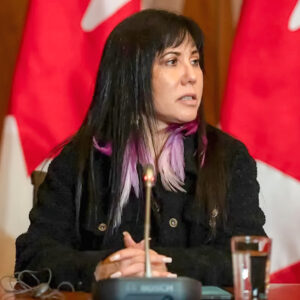
Initial doses of a COVID-19 vaccine are set to roll into the country in the next few weeks, and Canadians will be wondering where they stand in the inoculation line.
Which segment of the population will get the first doses, once Canada approves them for use, and how long will it take before most of us are inoculated and we can reach that point of herd immunity?
The National Advisory Committee on Immunization (NACI) has already recommended early doses be given to: residents and staff of long-term care homes; adults 70 years or older (starting with those 80 and over); front-line health-care workers; and adults in Indigenous communities — but there’s still some debate among experts on whether that’s the best strategy for a vaccine rollout.
Dr. Ross Upshur of the University of Toronto’s School of Public Health, agrees with NACI’s recommendations, but he says there’s also an argument to be made for vaccinating those more likely to spread the virus first — including people with jobs in the community that can’t work from home.
“There is quite a vigorous debate and … quite a varied set of arguments about who should go first and the priority list,” Upshur said. “And that’s because people have very deep and different intuitions about what fairness means, and which fundamental values should illuminate the distribution of scarce resources.”
Upshur says prioritization, which will fall to the provinces and territories to determine, will depend on the goal of the vaccination strategy.
If the main objective is to ensure economic recovery by limiting community spread, essential workers might get vaccinated first, Upshur explained.
But if the goal is to limit deaths by preventing our most vulnerable populations from getting COVID, older people, especially those in long-term care, should jump to the front of the line.
“Each one of those aims leads to favouring a different kind of population,” he said. “So priority-setting is a complex task.
“But because there’s going to be a limited number of doses available, choices will have to be made soon.”
Prime Minister Justin Trudeau said Monday that up to 249,000 doses of Pfizer’s COVID-19 vaccine will arrive on Canadian soil by the end of the month, with the first doses delivered next week.
Canada, which is currently reviewing several vaccine candidates, has purchased 20 million doses of the two-dose Pfizer vaccine, and is set to receive four million doses _ enough to inoculate two million people _ by March.
Kelly Grindrod, a researcher and associate professor at the University of Waterloo’s School of Pharmacy, says the concept of prioritizing the COVID vaccine may be hard for some to grasp.
Grindrod agrees with NACI’s recommendations of where the first stage of vaccine distribution should go, but subsequent stages of rollout become trickier.
Certain individuals may perceive themselves to be in a higher-risk group and therefore more deserving of a vaccine than others, she said, and it will be hard to determine for example, if a 50-year-old with asthma who works from home should be vaccinated over a taxi driver.
“What I always say is: if you don’t know anybody who’s gotten the virus, you’re probably one of the last to get the vaccine,” Grindrod said. “So that might mean you have a middle-class income and you don’t work in a factory or a grocery store.
“If you’re feeling like COVID is something that’s not really in your world, that’s probably a suggestion that you’re fairly low-risk for getting the virus in the first place.”
Grindrod says it’s important to remember that immunizing the majority of Canadians will take a long time.
The first stage alone could take months, she said, estimating that Canada will be able to vaccinate roughly three million people (in a country of 38 million) in the first quarter of 2021.
“If we’re all vaccinated by next Christmas, we will have done a great job,” she said.
Upshur agrees that getting to herd immunity will take time, but having multiple vaccine candidates reporting high efficacy rates should speed up that process _ at least in theory.
“As exciting as it is to have these studies showing really good results, there’s still a lot more questions,” he said. “There’s a lot more that needs to be done before we can be sure that these vaccines are going to achieve the goals that we hope.”






